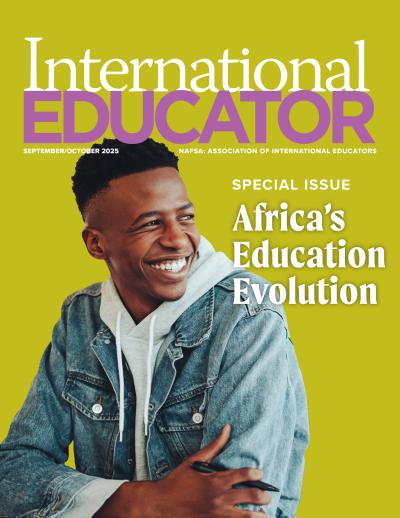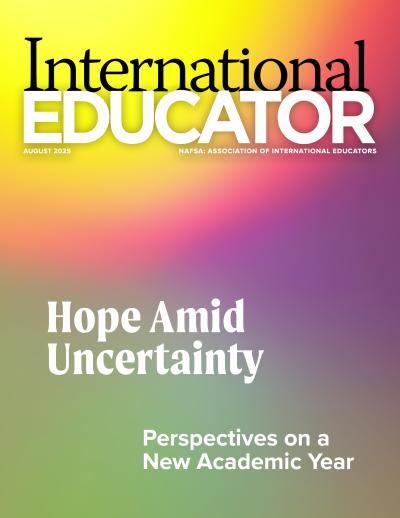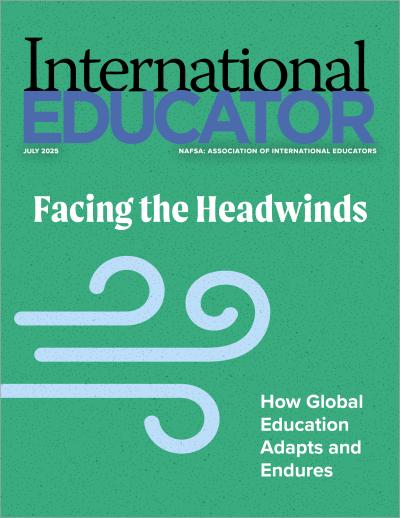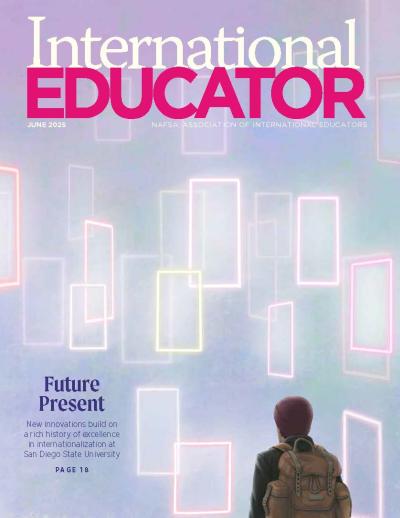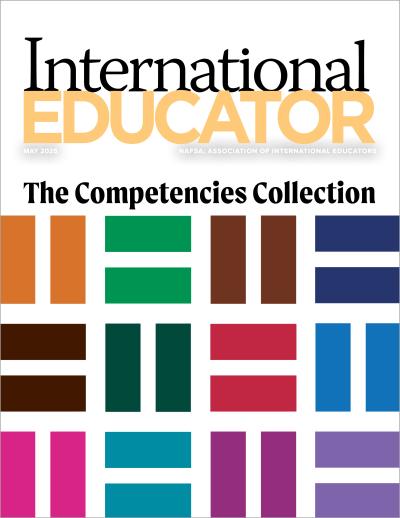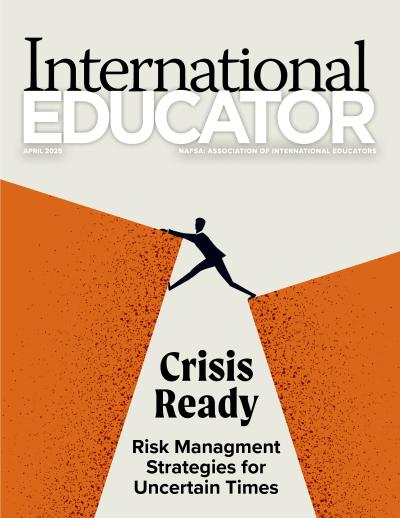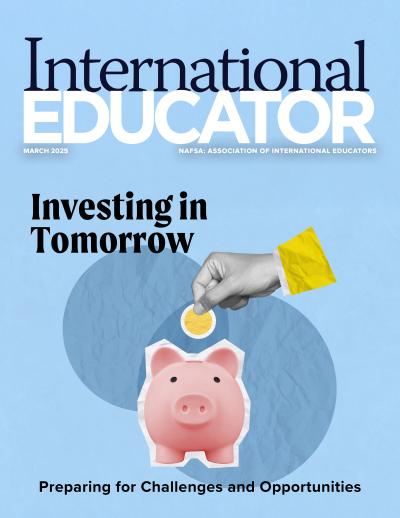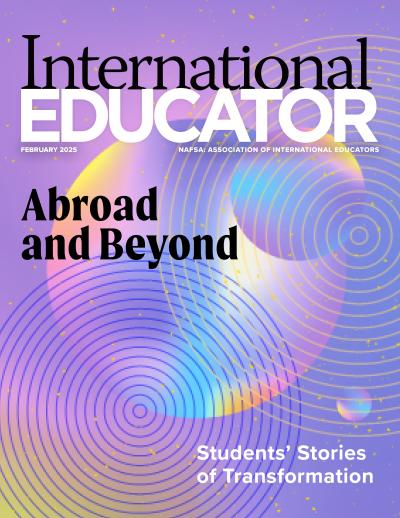Students as Storytellers: Using Student-Generated Content to Promote Education Abroad

A decade ago, study abroad offices relied on staff and administrators to promote their programs. Now, the rise of influencer culture and the accessibility of social media have savvy education abroad professionals turning to their program participants for marketing support, resulting in curated, authentic content that better resonates with prospective students.
“Social media platforms have made it easier for students to share real-time experiences, which resonate more with their peers than polished marketing materials,” says Mallory Minnehan, communications and marketing manager at the University of North Carolina-Chapel Hill Study Abroad Office. “Video content, in particular, has surged in popularity with day-in-the-life Instagram Stories and travel Reels gaining traction.”
Anize Appel, senior international officer, executive director of the Center for Global Education, and associate dean for study abroad at Moravian University, says that student-generated content now makes up 70 percent of the recruitment marketing for short-term faculty-led programs at her institution. “We have found that student content garners followers and attracts students who wouldn’t traditionally consider education abroad as a part of their academic journey,” she says.
Social media platforms have made it easier for students to share real-time experiences, which resonate more with their peers than polished marketing materials. —Mallory Minnehan
When initiating or improving a strategy for leveraging student-generated content in study abroad marketing efforts, success depends on identifying the right platforms and audiences, establishing efficient submission systems, and creating opportunities to amplify student voices across channels.
Determine the Who and Where
Before collecting student-generated content, it’s important to consider where it will be used and the preferred medium, content length, and delivery for that channel. Shelley Jessee, vice president of enrollment and engagement at CET Academic Programs, says education abroad professionals should first identify the intended audience and their content consumption preferences and then decide on channels. “Find out where your students go for their information,” she says. “You might learn of channels specific to your campus and the student populations you are trying to reach that are worthy of your attention.”
Consistently publishing content on a few platforms will reach more students over time than haphazardly posting on many channels. —Shelley Jessee
Appel agrees that student and faculty conversations can help shed light on preferences, recommending informal focus groups or surveys to understand what’s currently working and what can be improved. “Additionally, use platform and website analytics to determine what channels have the most engagement and visibility so that the [quantitative] data can drive decisions along with the qualitative data from those conversations.”
Also, consider your capacity and limitations and do what is both sustainable and impactful for you and your students, says Jessee. “If you don’t have the bandwidth to produce video content weekly, don’t start a video-based channel like YouTube or TikTok. If you know you can’t manage a team of student bloggers each term, don’t start a blog program. Consistently publishing content on a few platforms will reach more students over time than haphazardly posting on many channels,” she says.
Develop a Streamlined System for Submission
Creating a sustainable system to collect student-generated content is key, and it doesn’t need to be complicated, says Minnehan. Minnehan and her team created a “Student Spotlight” questionnaire, which they leverage in many ways to collect content from students. “The form is a required portion of the application for students to join our ambassador program. Scholarship recipients are invited to complete it as part of the stewardship post program, and all past participants are invited to fill it out as an opportunity to share and reflect on their experience,” she says. “If all your content is fed into a single form, you can export the results in Excel and easily parse through it when you need to find a particular type of story quickly.”
At the University of Wisconsin-Madison, Bri Raymer, marketing manager, also relies heavily on content submitted through an online portal and leans on trained student staff to process the materials. “We require submission of content as part of a scholarship students receive through our office,” she says. “Scholarship recipients can choose between submitting 10 photos and captions, a 1–4 minute video, a postprogram reflection, or two blog entries, mailing a postcard to our office while abroad that replies to one of our prompts, or agreeing to a 24-hour takeover of our Instagram Stories.”
Jessee adds that it’s important to keep inclusion top of mind when gathering or using student-generated content in order to ensure representation of the many intersectional, varied experiences that students bring to study abroad programs. “Include questions about identity…and intentionally invite students from underrepresented identities to share their experiences with you. Ensure that you’re not misrepresenting your programs’ diversity; don’t use [multiple] photos of the same students in [one] piece of material. And when possible, always let the students use their own words to describe their experiences of identity when studying abroad.”
Maximize Opportunities for Promotion
After identifying channels and audiences and building a robust content repository, maximizing and repurposing content across various platforms is essential. “After students complete a 24-hour takeover of our Instagram Stories, we use their content to create a short video, which we [then] post to [the] corresponding program page or embed in presentations and email campaigns,” Raymer says. “Postcards mailed to our office from students currently abroad are displayed in our Study Abroad Resource Center [and] digitized to create posts on social media, and quotes from the postcard text are integrated into presentations or [students’] corresponding program pages.”
Students need to see the places they will visit and feel connected to the content in the manner they are accustomed to. —Anize Appel
Raymer also notes that building connections with other campus offices and student organizations is a great way to get content in front of the right audiences. She recommends reaching out to academic departments when study abroad students from their programs have created new content, to suggest that the departments share content via their newsletters and websites. “Similarly, tagging campus offices or student organizations in relevant social posts or stories is an easy way to encourage resharing of content with a click of a button,” she says.
Student Voices Garner Engagement
While some education abroad professionals may have concerns about relinquishing control of the narrative to students, Raymer stresses that the benefits far outweigh the risks. “My experience has been that when provided with some guidelines, students by and large submit great work,” she says. “It’s true that students may not always say things in the way that you or your office would prefer, but the interest, trust, and engagement that comes from the follower being given a direct, live-time connection with a student abroad typically outweighs the possible off-brand messaging.”
Appel has seen this pay off at Moravian, where applications for study abroad have increased by 64 percent since student-generated content started being used in marketing. “Students need to see the places they will visit and feel connected to the content in the manner they are accustomed to,” she explains.
With the right systems and processes in place for leveraging student-generated content, institutions can not only increase engagement with education abroad but also provide authentic perspectives that help prospective participants envision their own international education journeys. •
Additional Resources
About International Educator
International Educator is NAFSA’s flagship publication and has been published continually since 1990. As a record of the association and the field of international education, IE includes articles on a variety of topics, trends, and issues facing NAFSA members and their work.
From in-depth features to interviews with thought leaders and columns tailored to NAFSA’s knowledge communities, IE provides must-read context and analysis to those working around the globe to advance international education and exchange.
About NAFSA
NAFSA: Association of International Educators is the world's largest nonprofit association dedicated to international education and exchange. NAFSA serves the needs of more than 10,000 members and international educators worldwide at more than 3,500 institutions, in over 150 countries.
NAFSA membership provides you with unmatched access to best-in-class programs, critical updates, and resources to professionalize your practice. Members gain unrivaled opportunities to partner with experienced international education leaders.







